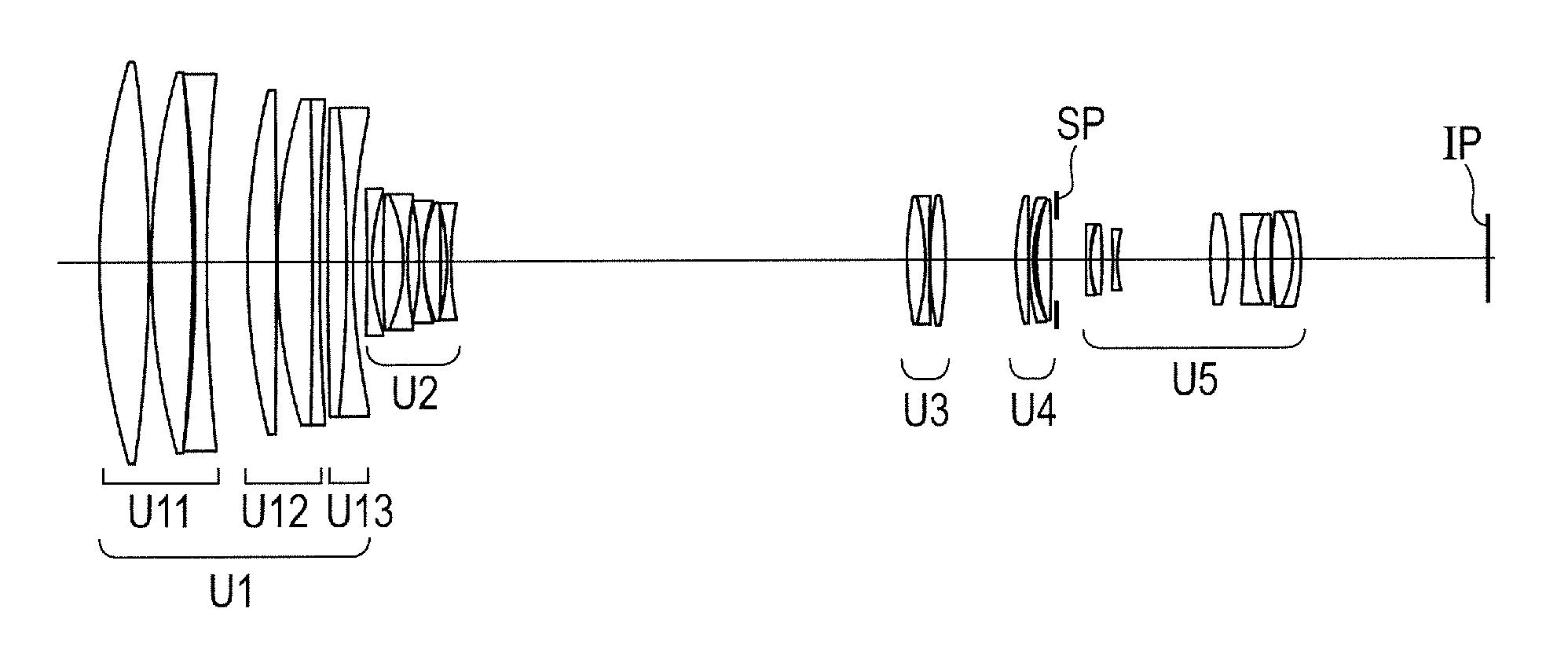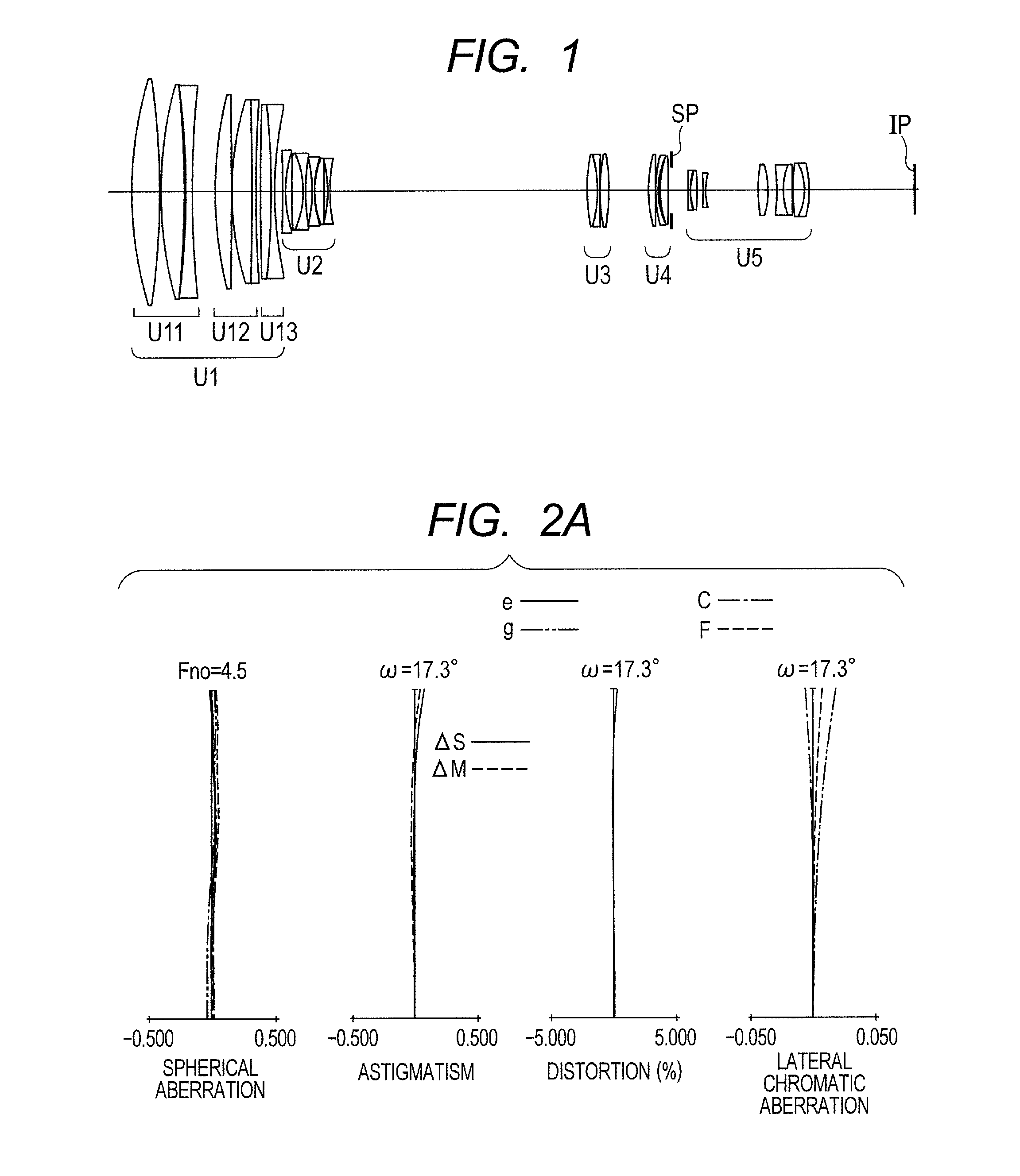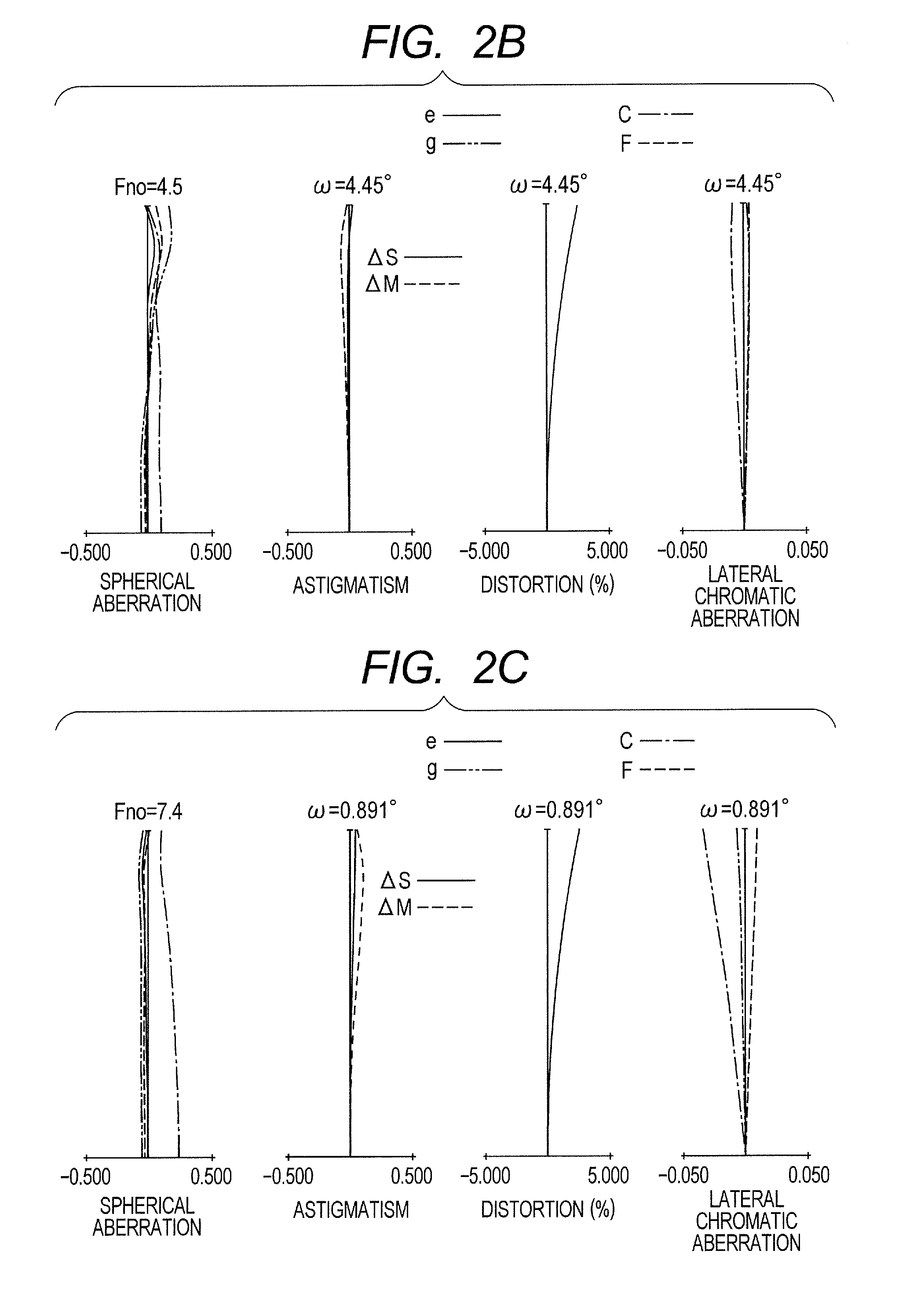Zoom lens and image pickup apparatus including the same
a technology of zoom lens and image pickup, which is applied in the field of zoom lens, can solve the problems of difficult downsizing of entire zoom lens, difficult suppression, and noise in operation affecting photography, and achieves the effect of small size and weight, high magnification
- Summary
- Abstract
- Description
- Claims
- Application Information
AI Technical Summary
Benefits of technology
Problems solved by technology
Method used
Image
Examples
embodiment 1
[0077]FIG. 1 is a lens cross-sectional view when focus is at an object at infinity at the wide angle end (short focal length end) in Numerical Embodiment 1 as Embodiment 1 of the present invention. FIGS. 2A, 2B, and 2C are aberration diagrams when focus is at infinity at the wide angle end, when focus is at infinity at a zoom position having a focal length of 200 mm, and when focus is at infinity at the telephoto end, respectively. In the lens cross-sectional views, the left side is a subject (object) side (front side), and the right side is the image side (rear side). A first lens unit U1 having a positive refractive power that does not move includes, in order from the object side to the image side, a first sub lens unit U11 having a positive refractive power, a second sub lens unit U12 having a positive refractive power, and a third sub lens unit U13 having a negative refractive power. A second lens unit U2 having the negative refractive power that moves during zooming is moved on...
embodiment 2
[0081]First to fourth lens units in Numerical Embodiment 2 as Embodiment 2 are described. In Numerical Embodiment 2, the first lens unit U1 corresponds to the first to thirteenth lens surfaces, and includes, in order from the object side to the image side, the first sub lens unit having a positive refractive power and the second sub lens unit having a negative refractive power. The first sub lens unit having the positive refractive power includes, in order from the object side to the image side, two positive lenses, a negative lens, and two positive lenses. The second sub lens unit includes a cemented negative lens formed by cementing a positive lens and a negative lens, and the second sub lens unit is moved in the optical axis direction to perform focus adjustment. The second lens unit U2 corresponds to the fourteenth to twenty-third lens surfaces in Numerical Embodiment 2, and includes, in order from the object side to the image side, a cemented negative lens formed by cementing a...
embodiment 3
[0083]First to fourth lens units in Numerical Embodiment 3 as Embodiment 3 are described. In Numerical Embodiment 3, the first lens unit U1 corresponds to the first to fourteenth lens surfaces, and includes, in order from the object side to the image side, the first sub lens unit having a positive refractive power, the second sub lens unit having a positive refractive power, and a third sub lens unit having a negative refractive power. The first sub lens unit having the positive refractive power includes, in order from the object side to the image side, two positive lenses and a negative lens. The second sub lens unit having the positive refractive power includes, in order from the object side to the image side, a positive lens, and a cemented positive lens formed by cementing a positive lens and a negative lens, and the second sub lens unit is moved in the optical axis direction to perform focus adjustment. The third sub lens unit includes a cemented negative lens formed by cementi...
PUM
 Login to View More
Login to View More Abstract
Description
Claims
Application Information
 Login to View More
Login to View More - R&D
- Intellectual Property
- Life Sciences
- Materials
- Tech Scout
- Unparalleled Data Quality
- Higher Quality Content
- 60% Fewer Hallucinations
Browse by: Latest US Patents, China's latest patents, Technical Efficacy Thesaurus, Application Domain, Technology Topic, Popular Technical Reports.
© 2025 PatSnap. All rights reserved.Legal|Privacy policy|Modern Slavery Act Transparency Statement|Sitemap|About US| Contact US: help@patsnap.com



